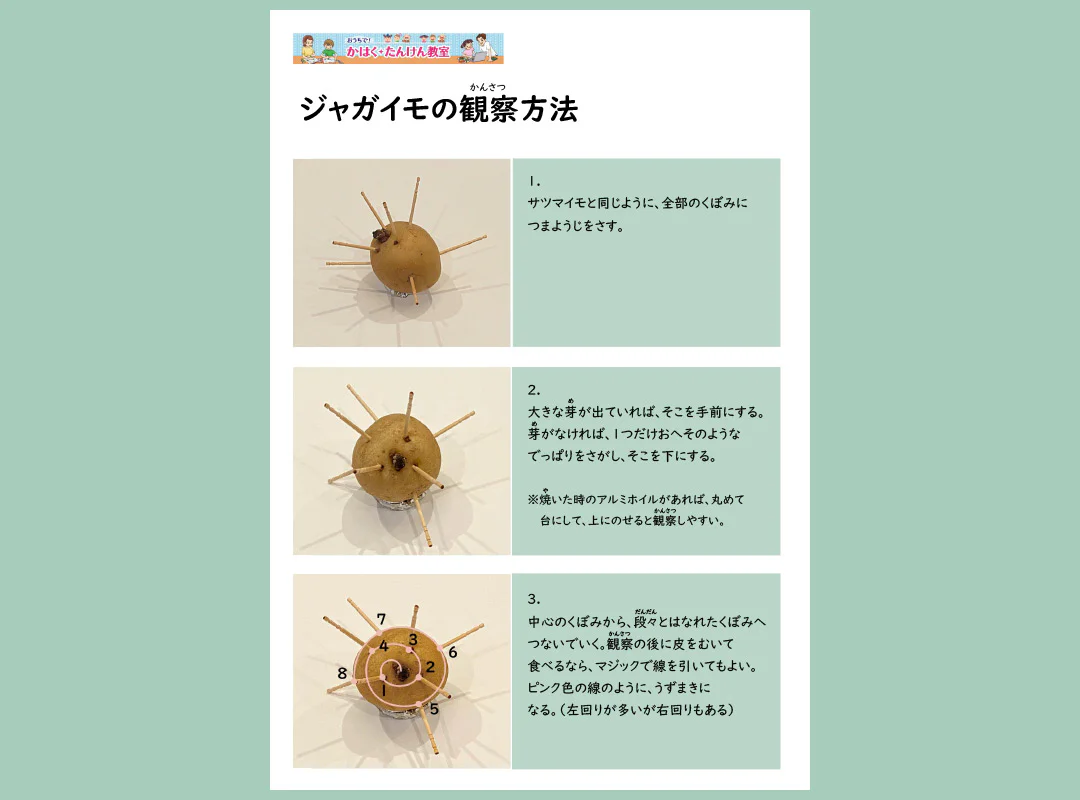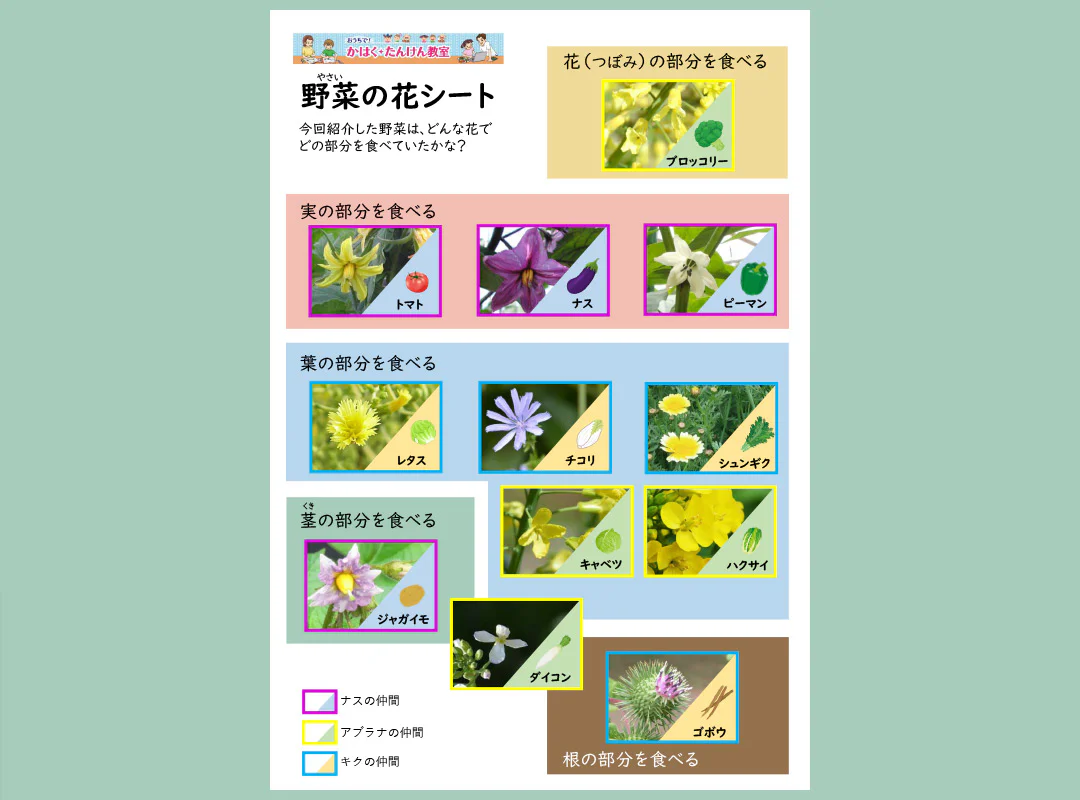
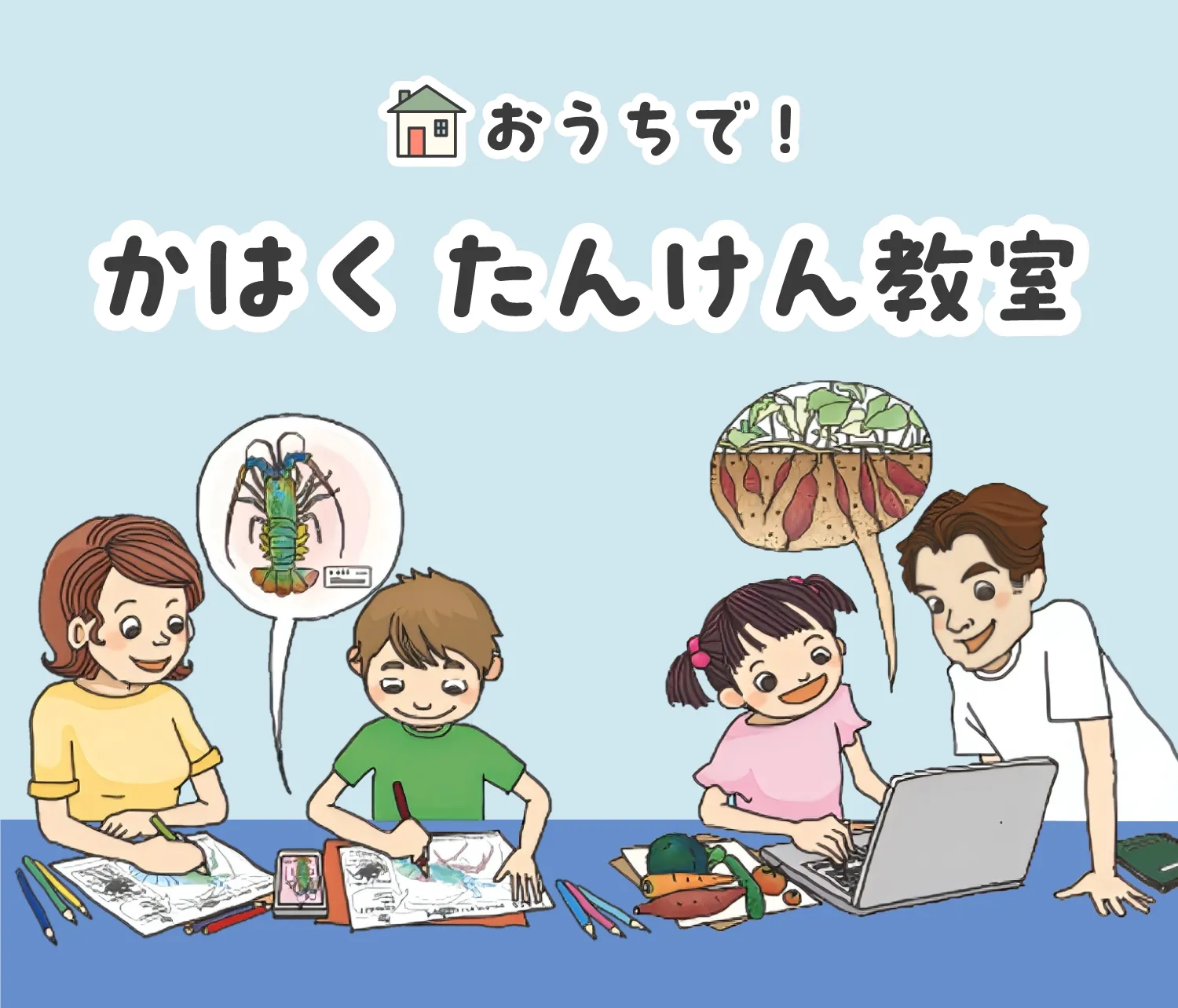
Delicious Fun Facts from the Field: Secrets of Vegetables
Observation
Delicious Fun Facts from the Field: Secrets of Vegetables
In this "Let's Try" section, we'll introduce an observation activity using sweet potatoes. After you have fun observing with your family, make sure to enjoy eating it too!
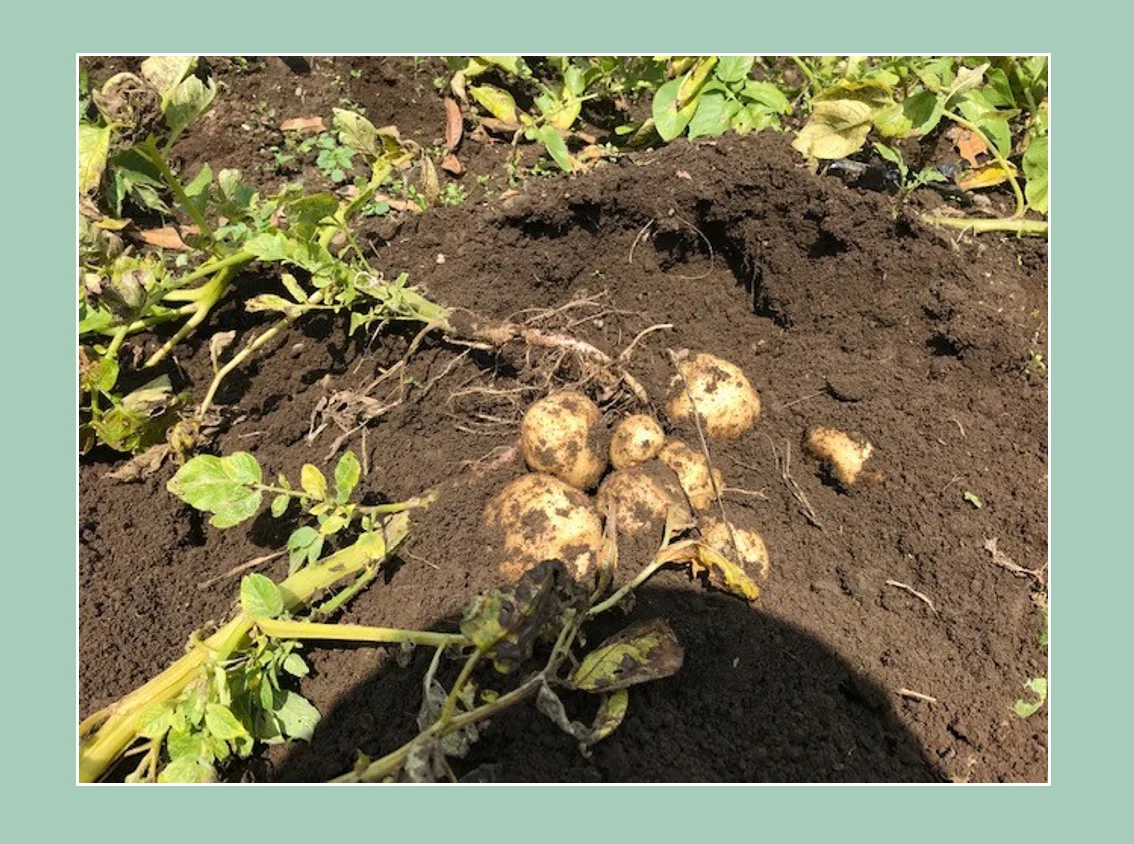

Yes! Now, let's observe some familiar vegetables you have at home!

Okay! Doctor, what should we prepare?

First, get a sweet potato (like a baked sweet potato) and some toothpicks.
Having some aluminum foil handy is useful too.
Having some aluminum foil handy is useful too.


Huh?!Baked sweet potato?

That's right.
First, take a good look at the baked sweet potato
First, take a good look at the baked sweet potato
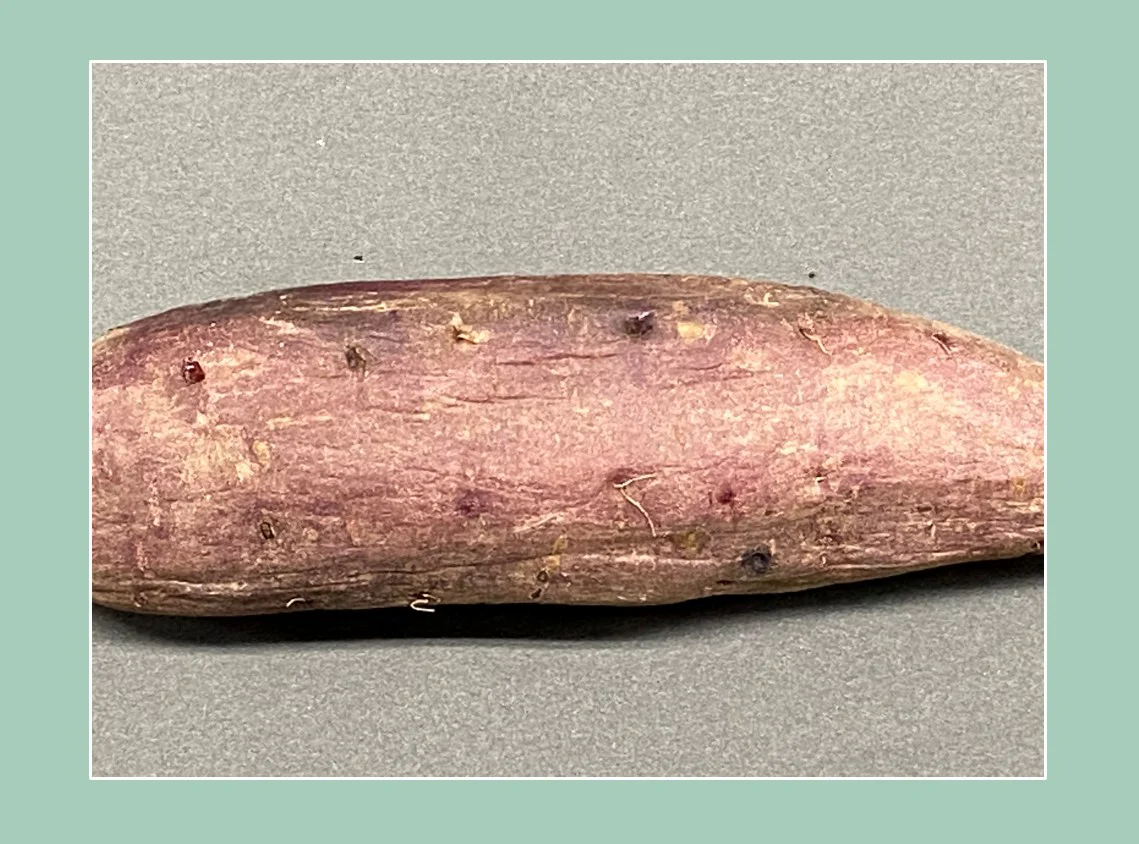

Hmm, looks delicious!

Well, that's great, but what about the surface of the sweet potato?

Oh, I see what you mean!
Umm, there are some dents.
Umm, there are some dents.

Those dents are spots where thin roots called lateral roots used to grow.
Try sticking a toothpick into the dents.
Try sticking a toothpick into the dents.
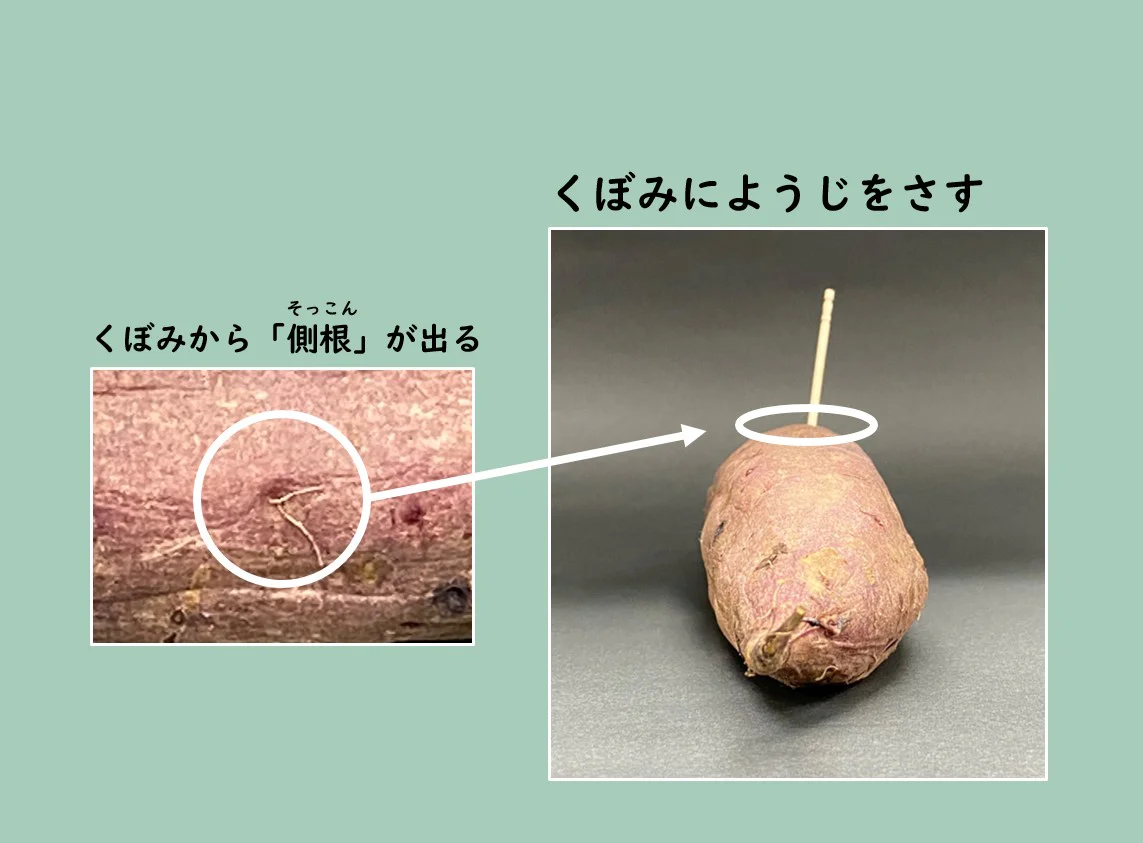

Using aluminum foil as a base makes it easier to stick the toothpicks all around!
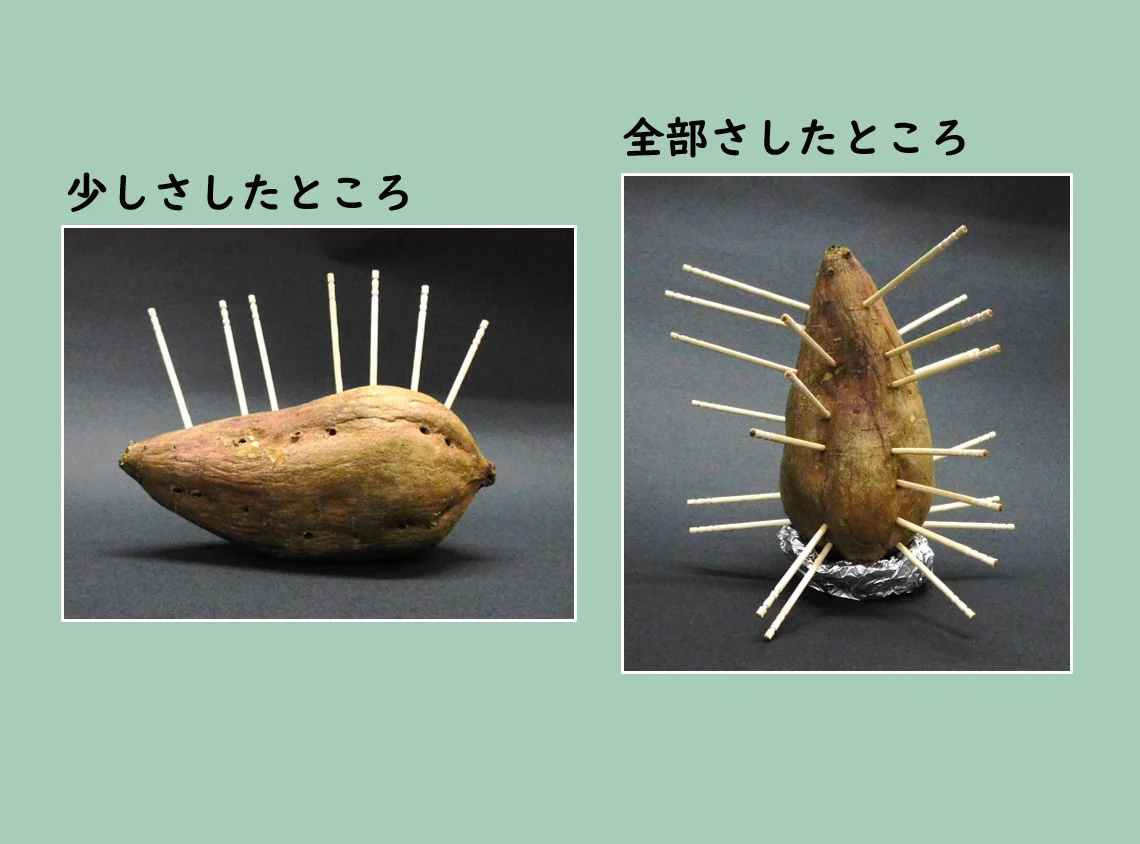

It's starting to look like a hedgehog.

Once you've stuck toothpicks in all the dents, look from the top.


Wow, that's amazing! It kind of looks like a star.

Exactly! Beautiful, isn't it?
The spots where the lateral roots grow are always arranged in five rows on a sweet potato.
The spots where the lateral roots grow are always arranged in five rows on a sweet potato.
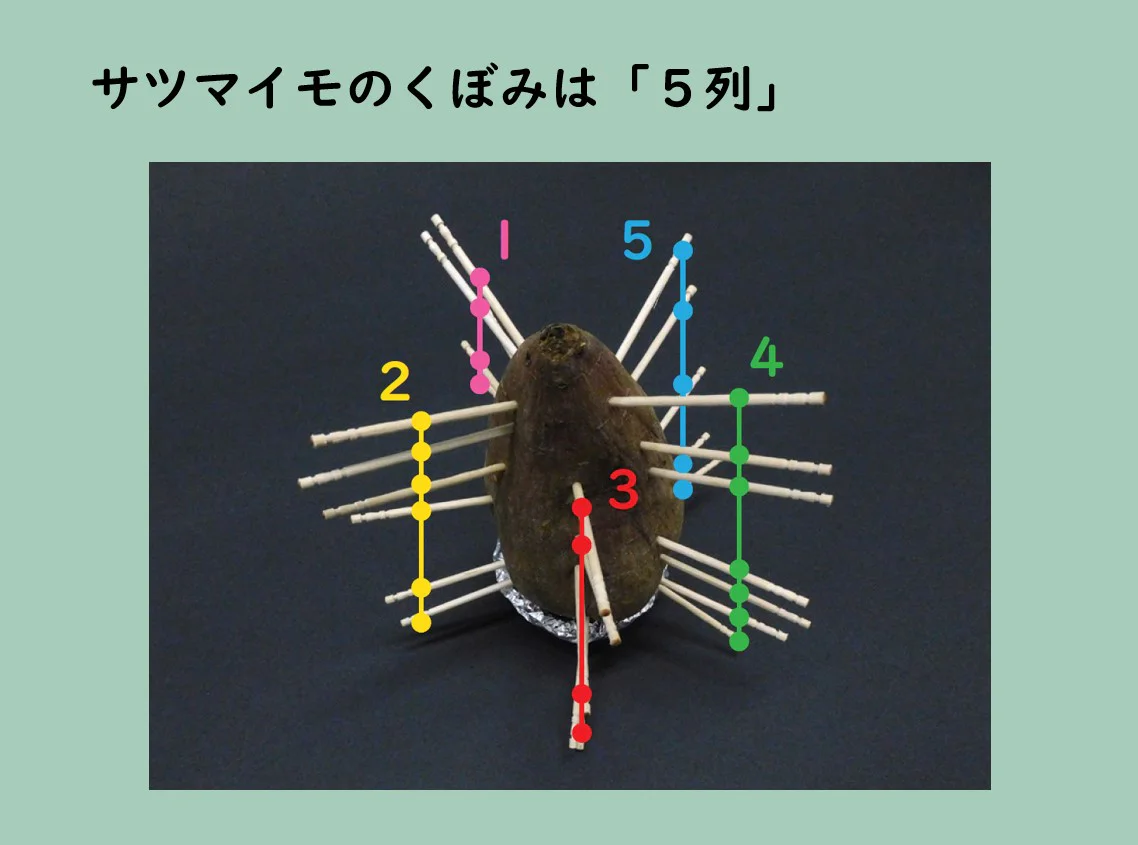

Interesting. This is really interesting when you look at it like this!

And the sweet potato everyone is eating is actually the root part.


Interesting.

Next, let’s observe a potato! Check out this “Potato Observation Sheet” for detailed instructions.

If you stick toothpicks in all the dents, it will look like this.
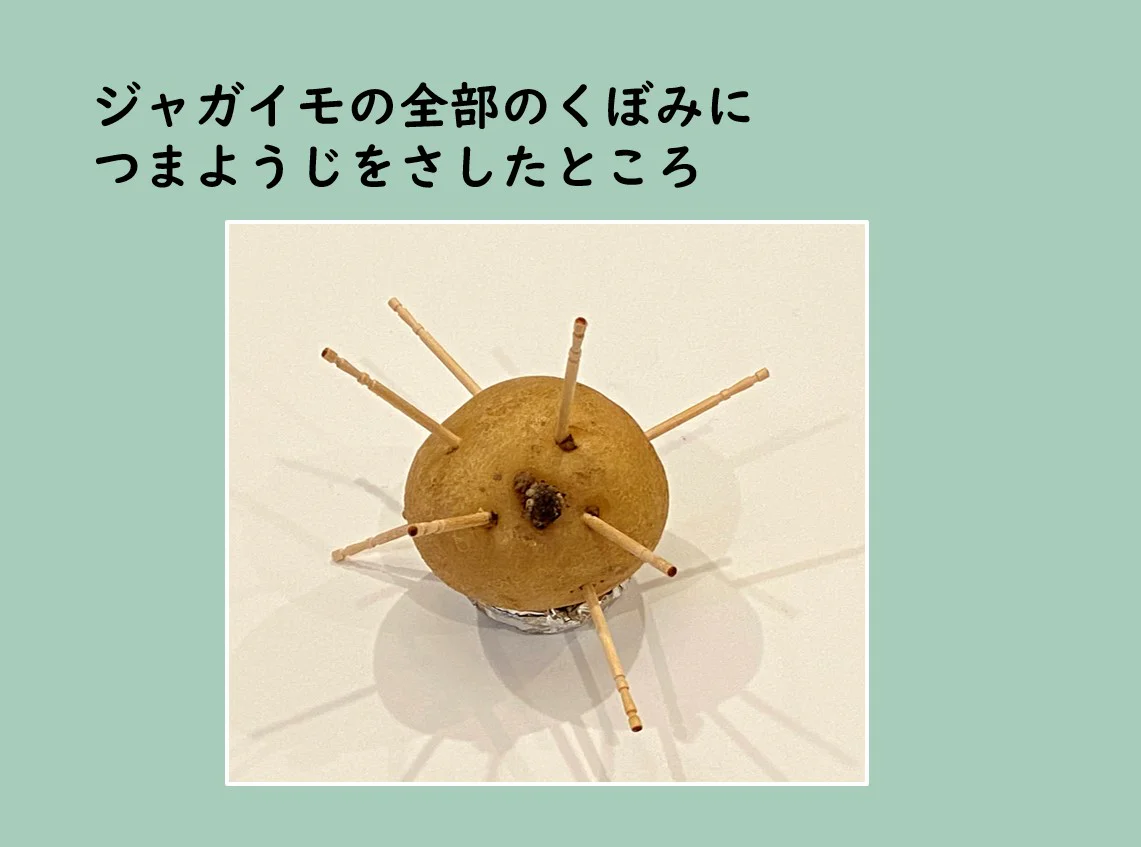

The dents aren't arranged in just one row.

The dents spiral out from the center where they're clustered.
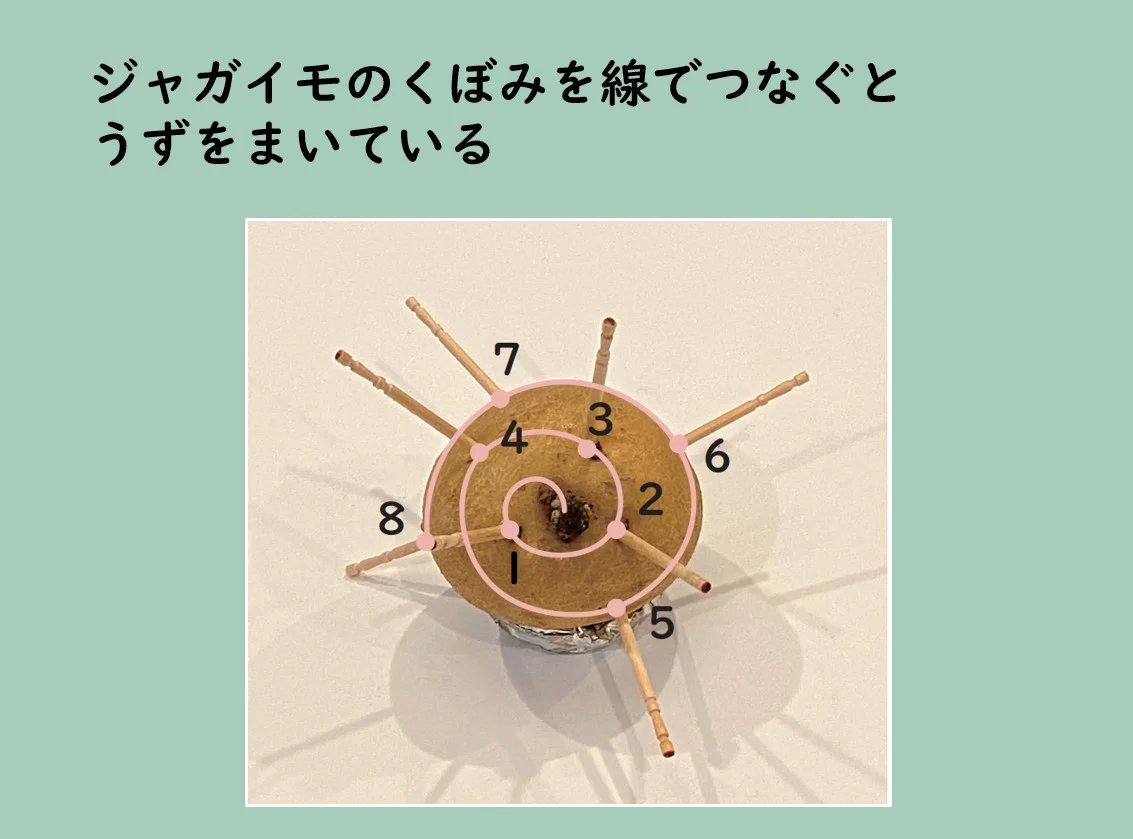

Oh, you're right! It's a spiral!
That's so cool!
That's so cool!

Many people think the part we eat on a potato is the root because it grows underground, but actually, it's a tuber, which is an underground stem!The dents are where the “eyes” sprout from.
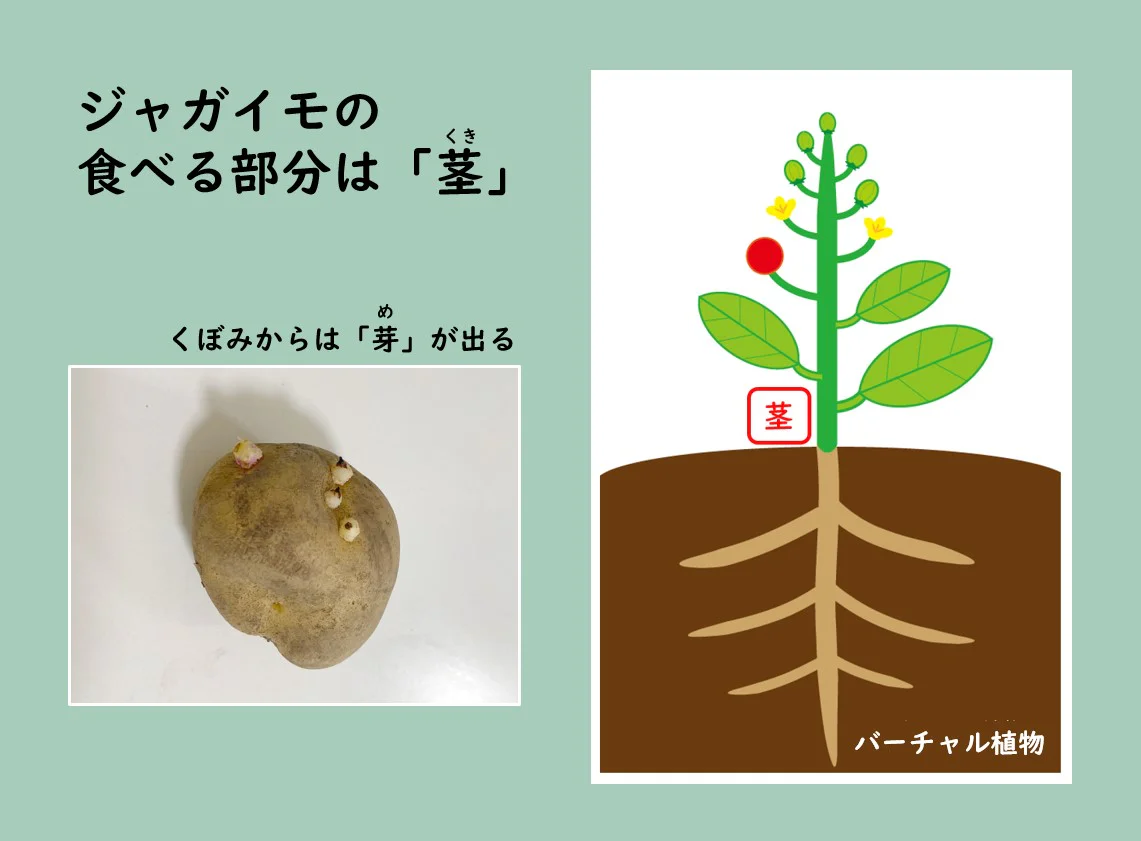

Wow, so it's a stem!

Potatoes belong to the nightshade family, right?

That's right! We learned that in the "Let's Look" section.
I made a sheet with the names and flowers of the vegetables we talked about today. Please check it out! You can even cut them out and quiz your classmates!

I'm getting hungry.

With this knowledge, you're a vegetable expert starting today! Shall we eat some baked sweet potatoes together? Now that you know vegetables have such beautiful flowers, I hope you'll eat them without being picky from now on.

Okay!
Delicious!
I wonder what's for dinner tonight.
Delicious!
I wonder what's for dinner tonight.
We asked a researcher at KAHAKU!

This time's "Kahaku Expert"
Goro Kokubugata
(Senior Curator, Division of Plant Diversity and Conservation, Department of Botany)
Goro Kokubugata
(Senior Curator, Division of Plant Diversity and Conservation, Department of Botany)
Hmm, I’d say radish because it’s delicious no matter how you cook it.
Its flowers are beautiful too!
Its flowers are beautiful too!
Yes, you can see them in the vegetable section of the National Museum of Nature and Science's Tsukuba Botanical Garden in Tsukuba, Ibaraki Prefecture.
The garden created this vegetable section to help people realize that vegetables are plants by showing their flowers.
For us, the vegetables we eat every day are the most accessible and ideal plants to learn about. I hope families enjoy eating vegetables while thinking about which parts they are eating.
The garden created this vegetable section to help people realize that vegetables are plants by showing their flowers.
For us, the vegetables we eat every day are the most accessible and ideal plants to learn about. I hope families enjoy eating vegetables while thinking about which parts they are eating.
